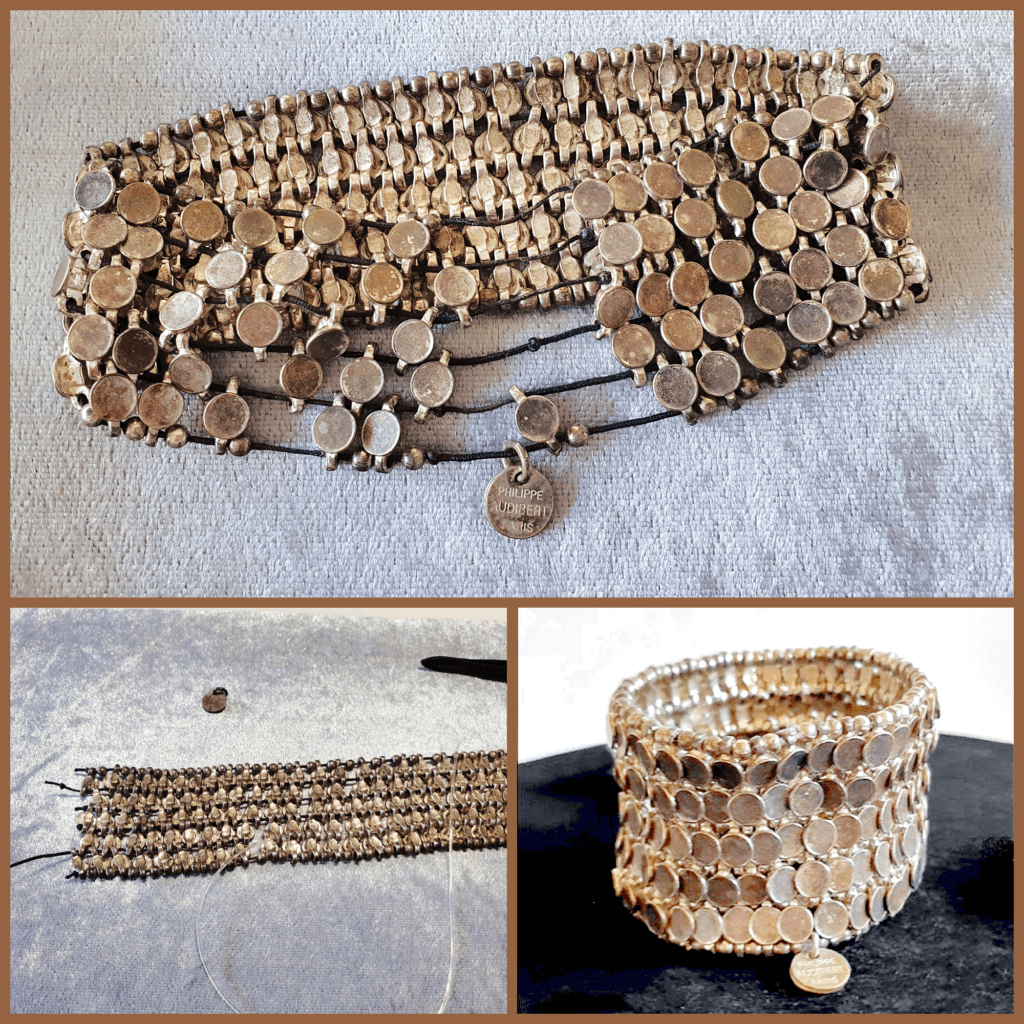Stretch Bracelet: Special Care and Consideration

Take photos of your new stretch bracelet.
This hint applies to any of your beaded jewellery pieces not just stretch bracelets. Photos can be used as a reference for a particular pattern or order to how the original beads were strung onto the elastic thread making it easier for the pattern to be recreated during repairs. Photos are a great way to remember placements of charms, especially helpful if the charms signified timeline events or achievements.
Limit contact with chemicals.
The advice I give for most jewellery including stretch bracelets is to make it the last item on and the first item off as the easiest way to protect your investment. This limits exposure to chemicals in detergents, perfume, and hair products etc. which can react with and weaken the elastic thread.

When possible, roll your stretch bracelet on and off your wrist.
By rolling rather than pulling at it the bracelet the cord used in your stretch bracelet receives less tension on the elastic. Regular pulling at the bracelet can cause overstretching of the elastic thread and add wear and tear from friction. The gentle rolling action generally creates less friction on the cord by the beads and charms.
Some designs may make this difficult to do – which is when the next tip will help.
Signs of Wear and Tear to watch for
Before each wear, keep an eye on any differences to the elastic thread used in your stretch bracelet which may indicate a need for it to be renewed.


Single Strand Stretch Cord
If the original thread was PowerCord®, StretchMagic®, Elasticity® or a similar rubbery style of single strand stretch cord signs of deterioration might be:
- Change in colour.
- Less translucent / more opaque
- Texture has become stiff or hard.
- Loss of stretch memory (does not bounce back to shape)
- Nicks or cuts in the surface of the cord
Multiple Strand Floss Cord
A style of elastic thread often used in commercial or mass-produced stretch bracelet making is Stretch Floss. As the name suggests this style of cord is like a dental floss. Stretch Floss is made of multiple strands of thin elastic material.
Signs of weakening to be aware of with this style of floss thread:
- Sections of frayed material between the beads
- Matted sections of thread along the cord
- Thinned areas of cord
Other Stretch or Elastic Style Cords
Fibre Wrapped Stretch Cord and Braided Elastic
Braided styles of hat elastic are generally used for infant or school hats, millinery designs, hair ties, accessories and craft objects.
Shirring elastic is a thin (approx. 0.5mm) elastic thread used in sewing applications such as gathering of waistlines, sleeve cuffs and necklines.
These styles of elastic threads may have beads added for decorations to hair accessories but is seldom used for jewellery applications.
Oops. The elastic cord broke.
These things happen! Maybe you caught your stretch bracelet on something, and it snapped. Sometimes life gets busy, and a sign of wear goes unnoticed until its too late.

A bonus handy hint here:
- Remove the brush head to your vacuum cleaner (you do not need it for this hint).
- Add a stocking or lightweight sock, with the toe section in place, to the tube.
- Ensure the stocking is long enough to get sucked up into the lower end of the pipe.
- Tightly secure the stocking/sock with an elastic band or piece of duct tape.
- Now you can safely vacuum the beads up from all their sneaky hiding spots. (You might be amazed at how far they can travel once they start rolling)
- They will be trapped in the toe of the stocking waiting to be brought to me for release back into a beautiful, beaded stretch bracelet.
Once you have collected as many of the beads as you can, locate the original photos (if you remembered to take them) then contact me to organise a quote and repair. You can arrange to visit the studio in Bibra Lake ((Perth Metro South) or organise to send them via Australia Post to my Parcel Collect address.
QUICK TIP:
When possible, wear bracelets on your non-dominant hand. If you are right-handed – wear your bracelets on your left wrist. This simple action reduces the risk of bumps, scratches or your bracelets getting caught on something, therefore reducing the wear and tear.



